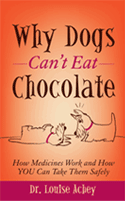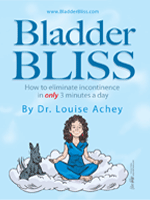Archive for November, 2012
A “flu shot” is different than other vaccines because the influenza virus is different. Vaccines against other viruses like measles, mumps, and chicken pox have stayed pretty much the same over the decades they have been in use. Influenza is different because it changes its shape almost continuously, and when it does, the vaccine against it loses its effectiveness. The biggest public health challenge of influenza is keeping up with the changes in the virus so that the vaccine that protects us against it can be updated to match.
There are 3 main types of influenza virus, also caused strains: Influenza A, Influenza B, and Influenza C. Influenza A causes most cases of influenza in humans, as well as the most severe. Most widespread epidemics, called pandemics have been caused by Influenza A. The most recent formulations of influenza vaccine contain 3 different strains of influenza: 2 strains of A and one strain of B. This will probably change next year because the FDA has just approved a new formulation that will allow a total of 4 strains in the vaccine.
How likely we are to become ill with influenza depends on whether we have been exposed to it before, and how effectively our immune system can respond to it.
When we come in contact with someone sick with influenza virus, we’ll be able to fight it off more effectively if we’ve encountered that particular strain before. This is because we have antibodies left over from our previous encounter with it. If we are exposed to a strain of influenza that is new to us, we’re more likely to become sick from it because we don’t have any antibodies left over to help us fight it, and have to start making them before we can fight back.
The flu vaccine will only protect us against the 3 specific strains of influenza that it contains. Once the virus changes, the vaccine doesn’t protect against the new strain as well. In order for the flu vaccine to continue to protect us, it has to be changed to match. To do this, we need to keep track of the influenza virus so that that we’ll know when it’s made another change. Since most new strains of influenza start in China, a nationwide network of surveillance is not enough. To keep up with influenza, you need a global network, like the one used by the World Health Organization, or WHO.
The WHO tracks currently circulating strains of influenza with over 100 influenza centers in more than 100 countries. These centers funnel information into five Centers for Reference and Research on Influenza, based in London, Melbourne, Tokyo, Beijing and Atlanta. These centers report on which flu viruses are currently circulating, identify newly emerging virus strains, and assess how these match up with current influenza vaccine components.
Which strains of influenza get included in our flu vaccine? The two main criteria used to decide which of the many strains of influenza circulating around the globe are included in the upcoming vaccine are the likelihood of a particular strain to cause significant illness in the United States, and the severity of the symptoms it causes.
Each February, the WHO meets to summarize the results of their ongoing global monitoring of influenza and to make recommendations of specific strains to include in flu vaccine formulas used in the Northern Hemisphere. They meet later in the year to select strains recommended for the Southern Hemisphere.
The WHO met in Geneva on February 23, 2012 to report on global influenza patterns and make recommendations for the Northern Hemisphere vaccine. Attending that meeting was a representative from the Center for Disease Control and Prevention (CDC), based in Atlanta. On February 28th, the CDC and the Food and Drug Association’s (FDA) Vaccines and Related Biological Products Advisory Committee voted on the exact formulation of our influenza vaccine.
The decision needs to be made as soon as reasonably possible, to allow time for vaccine makers to create the nearly 200 million doses that will be needed for the US population.
National Influenza Vaccination Week is December 2-8, 2012. Have you and your loved ones had their flu shot for this year? It’s not too late. Pharmacies and medical clinics have plenty of vaccine. Please contact them today to get your flu shot.
Leave a Comment
My doctor just called, and last week’s yearly blood work shows that I have a significant deficiency in Vitamin D. How did this happen? I suspect it’s something to do with having to take a prescription medicine that caused me an uncomfortable sun-related rash while enjoying myself watching a baseball game while on vacation in Florida. Since that painful incident I’ve become much more vigilant about staying out of the sun, but now I’m experiencing the results of that choice.
Vitamin D is a fat-soluble vitamin that is important in maintaining the strength of our muscles and bones. We get Vitamin D from diet, sun exposure, and supplements.
Vitamin D is called the “Sunshine Vitamin” because our bodies generate it when our skin is exposed to UVB rays in direct sunlight. You are most likely to be deficient in Vitamin D if you are elderly, have dark skin, or, like me for the past year and a half , spend little time outside in the sun without covering up or wearing sunscreen.
Vitamin D deficiency can also be from not being able to absorb fat-soluble vitamins, which can happen after having gastric bypass surgery, inflammatory bowel disease, or taking medicines like prednisone or the weight loss agent Alli®.
As we age, we’ll need more Vitamin D, because our skin is less able to make it from sun exposure and our kidneys become less efficient in changing it into its most active form. Although I’m only in my mid-fifties, I’m not alone in needing more Vitamin D. Over 50% of our elders in America are estimated to have Vitamin D deficiency, which has been linked to muscle weakness, falling, and an increased risk of breast, prostate, pancreatic, colon and ovarian cancers. Replenishing body stores of Vitamin D with supplementation has been shown to improve muscle strength and balance and to decrease the incidence of falls in elderly Americans by at least 20%.
Unfortunately,as I found out, it’s hard to get enough Vitamin D from what you eat. The best dietary source is fatty fish such as salmon, canned tuna and sardines, which have about 300 units of Vitamin D per 3.5 ounce serving. The next best source is fortified milk, which has up to 100 units per cup of added Vitamin D. Milk was fortified in the United States beginning in the 1930s to combat rickets, a deficiency of Vitamin D in children that caused soft bones and deformed legs. One of the most memorable and concentrated sources of Vitamin D is cod liver oil, with 1300 units per tablespoon. Thanks, I’ll pass on that…
How did I find out I needed Vitamin D supplementation? By a blood test last week that measures 25-hydroxyvitamin D in the body. If the level is less than 30, you are considered Vitamin D deficient and a 8-12 week course of prescription Vitamin D supplementation at 50,000 units once weeky is usually prescribed, with a maintenance dose of 1000 to 2000 units daily after that. My Vitamin D level was only 13, and I have just started taking 50,000 units every week of a prescription of Vitamin D supplement.
Vitamin D supplements come in both prescription and non-prescription strengths. There are 3 forms of Vitamin D available: D2, called ergocalciferol, D3, called cholecalciferol, and calcitriol. These are available without a prescription in several strengths, from 400 up to 4000 units. D3, also called cholecalciferol, is best one at maintaining your Vitamin D.
I’ve just started taking 50,000 units of ergocalciferol ( Vitamin D2), every week for 12 weeks, after which I’ll get another blood test to see if I’ve responded to that. If my level hasn’t risen to at least 30, I’ll be repeating the weekly supplementation for another 12 weeks. Once I get back into the normal range, I should be able to maintain my level with about 2,000 units of D3 every day, from either sun, diet or supplements.
Because I need to continue taking the medicine that caused me the sun reaction in Florida, I’m probably stuck taking a Vitamin D supplement from now on. Most women over 50 years old should take a calcium supplement with at least 800 units Vitamin D daily anyway, to help their body use that calcium to strengthen their bones. Because I already take a calcium supplement containing 800 units of Vitamin D, eventually I’ll need at least 1000 units of additional Vitamin D as Vitamin D3 daily. Choosing Vitamin D3 (cholecalciferol) for long term maintenance seems to maintain your levels better than taking Vitamin D2.
Dr. Louise Achey, Doctor of Pharmacy is a 30 year veteran of pharmacology. Please send questions and comments to www.AskDrLouise.com.
Leave a Comment
November 14th, 2012. Filed Under:
Medicine,
Taste.
Tags:
adverse effects of medicine,
amoxicillin,
antibiotic,
antibiotics,
cephalexin,
children,
doctors,
family medicine,
flavoring,
liquid antibiotics,
liquid medicines,
prednisolone,
smell,
taste Q: My 2-year old hates taking her medicine. Is there anything I can do to make it taste better?
Julie Andrews as the magical nanny Mary Poppins sang about how “a spoonful of sugar makes the medicine go down”. And to a child who doesn’t feel well, the bitter taste of a medicine is most unwelcome.
Have you ever muttered, “Do doctors have ANY IDEA how awful this stuff tastes?” On October 31st, sixteen new physicians learning how to be family doctors found out the answer to that question for themselves as they got a taste – literally – of their own medicine at the “Trick-Or-Treat Taste Test”.
These brave physicians-in-training, called residents, lined up to sample 10 different liquid medicines, half of which were commonly prescribed antibiotics. Each of the victims, er, participants lined up to collect their equipment and await their turn at sampling each liquid. To avoid creating a bottleneck, I set up two tables, each with an identical set of liquid samples awaiting judgment.
As each resident moved forward in line, they picked up a small paper cup containing 10 plastic spoons, a pencil and a score sheet listing each medicine in alphabetical order. To evaluate each sample, I instructed them to dip one of their clean plastic spoons into it, sniff it, and taste it, rating each one on the following characteristics: Smell, Taste, Texture, and Aftertaste. The scale was from 1 to 5, with a 5 standing for Extremely Good/Pleasant and a 1 representing Extremely Bad/Terrible.
I then pointed out to the two lines of neophyte judges the 2 double-lined trash containers positioned close to the sampling areas, each with 2-liter bottles of Sprite® and Fresca® standing next to a stack of paper cups. I carefully explained that they were supposed to taste each offering, but try to avoid swallowing it. The lined trash cans were there as spitoons and the Fresca® and Sprite® were available to help “cleanse their palate” after each sample. As a veteran of two previous taste tests, I assured them from vividly painful personal experience that although spitting wasn’t pleasant, it was significantly better than risking a world-class stomach ache.

Trick-or-Treat Taste Test
As they sampled the liquids, some pink, some clear, I heard them ask each other, “How bad can it be?”… “Eeew, that’s just nasty”…“I always wondered how liquid antibiotics tasted, well, this is my chance to find out”… “YUK!”… “How can something that smells good taste so awful?”
There were 5 antibiotics chosen: amoxicillin, amoxicillin with clavulanate, cephalexin, sulfamethoxizole-trimethoprim, and azithromycin. These are all very common antibiotics given to children for ear and skin infections.
The 5 antibiotics chosen were: amoxicillin, amoxicillin with clavulanate, cephalexin, sulfamethoxizole-trimethoprim, and azithromycin. Prednisolone, which is given to children with asthma, and is notoriously bitter tasting, was also included. Young doctors often choose prednisone liquid, but as bitter as prednisolone tastes, prednisone tastes even WORSE. Having young doctors taste it themselves helps them remember why they should avoid prednisone and order prednisolone instead.
The other selections included potassium chloride, ranitidine, iron, and nystatin suspension. Potassium chloride liquid was chosen so that they could appreciate its saltiness, ranitidine was chosen because it is often used for stomach pain and burning in children, liquid iron supplementation was another selection, and that was another choice. Iron supplement as a liquid was also evaluated, and the final options was nystatin suspension, which is often used for thrush.

Judging the Liquid Medicines
Each resident physician evaluated the 10 samples on a scale of 1 to 5, from 1 being Extremely Bad/Terrible to 3 as Neutral and 5 being Extremely Good/Pleasant. Each sample was rated for its smell, taste, texture and aftertaste.
The winner overall was amoxicillin, and the worst overall was potassium chloride. There was a tie for WORST TASTE between prednisolone and potassium chloride. Potassium chloride took “top honors” for WORST SMELL. The entry that was voted WORST TEXTURE was azithromycin and WORST AFTERTASTE was prednisolone.
As the votes were being tallied, we brainstormed on ways to minimize the terrible taste of medicines. One strategy was to mix it into something else that could mask the smell, taste or texture. Since most liquid medicines can be given with food, they suggested pudding, applesauce, or ice cream as good choices to hide the taste. Another idea was following the medicine with a “chaser” that rinsed the liquid off the taste buds quickly. The taste test judges overwhelmingly preferred the grapefruit flavored Fresca® for this purpose over the lemon-lime flavor of Sprite®.
Another option suggested was chocolate syrup, either by itself or mixed into pudding or ice cream. Chilling the medicine by placing it into the refrigerator was another approach, as was adding flavoring to the entire bottle of medicine. Small amounts of flavored extract used to flavor candy are available at some groceries and kitchen supply stores, or you could use concentrates sold to flavor water, like Crystal Light® or MiO®. Some pharmacies will add flavoring to liquid medicines, if you request it. Because flavors depend on scent receptors found in the lining of your nose, an older child could hold his nose while swallowing and quickly follow it with a swallow of another liquid to remove the taste.
Dr. Louise Achey, Doctor of Pharmacy is a 30-year veteran of pharmacology. Please send your questions and comments to www.AskDrLouise.com.
Leave a Comment
Q: Since I started a new medicine, my food doesn’t taste right. Is there anything I can do about this?
Our ability to taste foods and drinks can affect not only our enjoyment of socializing and savoring favorite flavors, but problems with tasting can actually lead to medical problems. As we age, we start to lose our ability to taste sweet and salt, and that can begin to affect our food choices.
Even though the taste of a particular medication can be unpleasant, there are over 250 medicines documented to affect how we taste or smell. Also, taste and flavor are not quite the same. If you have ever had a bad cold or sinus infection that suppressed your sense of smell, you may have noticed that foods and drinks didn’t, well, taste quite right; they just didn’t have their characteristic or particular flavor.
Taste is actually a fairly complex process. Several different types of cells and nerves inside the mouth and nose receive signals from the food or drink we’ve put in our mouths. These signals are carried to the brain, where they are interpreted and identified. This is the way we can tell the difference between the smell of a Cinnabon cinnamon roll and spoiled milk.
Think for a moment about your absolute, favorite flavor of ice cream. Mmm… As you savor this tasty treat from memory, what about it makes it taste so good? You get help in deciding the answer to that question from three types of receptors that work together to create this personal favorite taste: your taste buds, some of the other taste receptors found in your mouth, and smell receptors in your nostrils. Each of these handles a different type of sensation.
Your taste buds live on your tongue, soft palate, and the back of your mouth where you swallow. Each of these specialized taste detectors have just one of 4 different types of taste receptor cells, each taste bud specializing in picking up only one type of taste: sweet, salty, sour or bitter. The other taste receptors in your mouth are arranged not only on your tongue but all along the lining of your mouth, and these other receptors can sense stinging, burning, cooling and sharpness. People who wear dentures report that they don’t taste food as well since they started wearing them. This is because the taste receptors on the roof of their mouth are now covered up.
What causes a change in what you can taste? Medications are a common culprit, but they aren’t the only cause. Medical conditions such as cancer or poor oral health including severe tooth decay, an abscessed tooth, or gingivitis can affect the ability to taste. Either radiation or chemotherapy for cancer can also change your perception of how your food and drink tastes.
Medicines can alter how you taste in several ways. The medicine itself can be bitter or foul-tasting, or it can change the way your saliva or your food tastes. Liquid medicines come in contact with more of your taste buds than a tablet does, which creates a more intense taste experience. To give our new doctors-in-training an appreciation of why kids have to be coaxed into taking their medicine, my clinic is hosting a “Taste Test” of several liquid medicines this week. It’s appalling how awful many of them taste.
Another way medicine can affect your ability to taste is by causing your mouth to be dry. The cells that make up the receptors for taste and smell need to be kept moist in order to function. This is usually accomplished by saliva bathing your taste buds and other taste receptor cells in your mouth, and mucus protecting the scent receptors in your nose.
What about experiencing a “bad taste in my mouth”? Antibiotics and cancer chemotherapy drugs top the list of drugs that can do that. Unfortunately, the drugs most commonly used to treat breast cancer are some of the worst offenders at changing taste and flavor. These drugs diffuse throughout your body, even into your saliva and mucus, often causing a metallic taste in your mout.? Do you notice a “funny” (metallic, bitter or sour) taste in your mouth while on a particular medicine? That’s because you’re actually tasting the drug itself as it contacts your taste buds!
Chemotherapy agents can also affect taste by destroying your taste and smell receptor cells. Chemotherapy and radiation treat cancer by attacking any rapidly dividing cells. Taste receptor cells are renewed every 10 days, and smell receptor cells are regenerated every 30 days, making them very susceptible to damage from both chemotherapy and radiation treatment.
What can you do about your funny taste in your mouth? Sugarless gum with xylitol, or sugarless lozenges can help relieve symptoms of dry mouth and help chase away an unpleasant taste. Sips of water or ice chips can also help mask weird or just plain nasty tastes. If this doesn’t help, speak up and let your doctor know about this so that you can discuss other medicines that could be substituted.
Dr. Louise Achey, Doctor of Pharmacy is a 30-year veteran of pharmacology. Please send your questions and comments to www.AskDrLouise.com.
Leave a Comment





